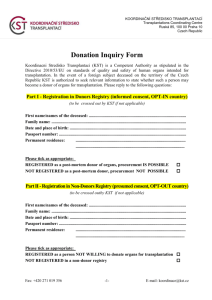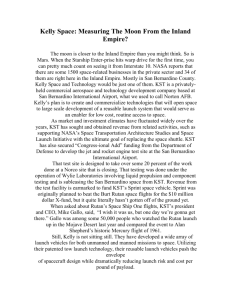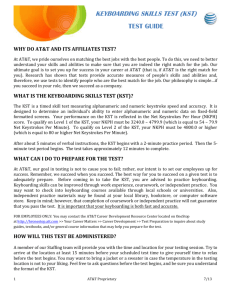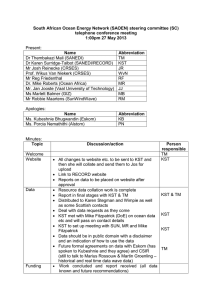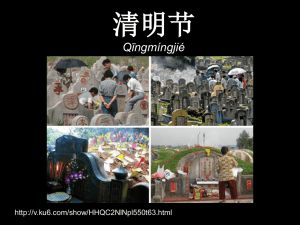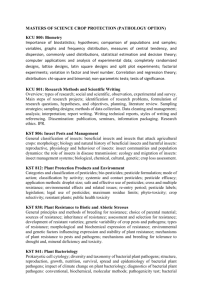Knowledge Structure Mapping
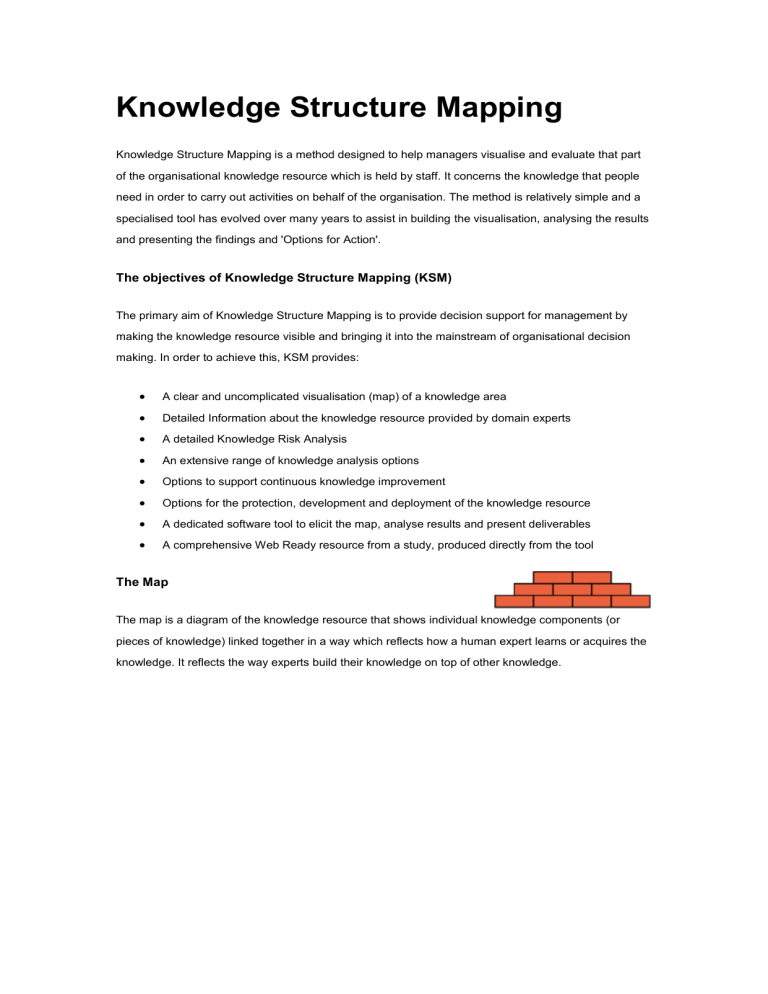
Knowledge Structure Mapping
Knowledge Structure Mapping is a method designed to help managers visualise and evaluate that part of the organisational knowledge resource which is held by staff. It concerns the knowledge that people need in order to carry out activities on behalf of the organisation. The method is relatively simple and a specialised tool has evolved over many years to assist in building the visualisation, analysing the results and presenting the findings and 'Options for Action'.
The objectives of Knowledge Structure Mapping (KSM)
The primary aim of Knowledge Structure Mapping is to provide decision support for management by making the knowledge resource visible and bringing it into the mainstream of organisational decision making. In order to achieve this, KSM provides:
A clear and uncomplicated visualisation (map) of a knowledge area
Detailed Information about the knowledge resource provided by domain experts
A detailed Knowledge Risk Analysis
An extensive range of knowledge analysis options
Options to support continuous knowledge improvement
Options for the protection, development and deployment of the knowledge resource
A dedicated software tool to elicit the map, analyse results and present deliverables
A comprehensive Web Ready resource from a study, produced directly from the tool
The Map
The map is a diagram of the knowledge resource that shows individual knowledge components (or pieces of knowledge) linked together in a way which reflects how a human expert learns or acquires the knowledge. It reflects the way experts build their knowledge on top of other knowledge.
This figure shows a section of a typical Knowledge Structure Map . The top node shown is that of Planning and Logistics (for a particular company). It was said by experts at that company that an expert in Planning and
Logistics would be expected to already know how to 'Assess Resources', 'Schedule Activities' and conduct a 'Site Survey'. The map also shows the knowledge dependency in a little more depth. For instance, an expert in 'Assessing Resources' must already know 'Manpower Capabilities'.
Analysis
The red colour of Manpower Capabilities indicates that this knowledge is considered by experts to be at high risk. The experts assign various parameter values to each knowledge node on the map and the tool uses these separate values to compute knowledge risk . Experts were asked to consider things such as how important the item of knowledge is to the topic being studied and how difficult it would be to replace the knowledge if the organisation suddenly lost it. Analytical results such as risk can typically be viewed within the context of the map and also in tabular or graph form.
The parameter values make it possible to analyse the knowledge resource in a variety of ways to provide a range of useful results.
There are also other types of analysis available which each provide informative results. For instance, it is possible to consider the knowledge which is common to two main knowledge areas. These knowledge areas might represent the knowledge needed by two separate departments in an organisation. The map can clearly show the knowledge which is needed by both departments.
Combining the analytical features from a Knowledge Study can provide the cornerstone of an effective knowledge management strategy.
In this case, knowledge management would feature true knowledge, that is, the things which people know. It would also directly target management support and not become part of a more general Information Technology activity.
The Size of Knowledge Studies
The method is useful for small focused knowledge studies. For instance the conceptual studies of rights and negotiation can greatly improve the management and general understanding of these topics.
Knowledge studies of entire business operational areas are typical of those carried out by AKRI and the ones most frequently requested by organisations.
Even very large knowledge studies are possible. The knowledge study of an entire organisation can form the backbone of a knowledge management strategy which is about people and provides information for managers.
Project Monitoring
As many business projects develop, there is an implicit expectation that the knowledge associated with the ultimate outcome of the project will also develop. Unfortunately this requirement is not typically monitored by managers because systems to achieve effective knowledge growth monitoring are not available. KSM can provide such a system .
Knowledge Growth Monitoring
The Knowledge Study Tool can provide information about the growth (or risk reduction) for a knowledge resource by comparing a Knowledge Structure Map with a previous version of itself. This capability only
requires a review of the knowledge parameters used in the original study, something that is probably a desirable and useful exercise as a general knowledge management function.
Some results of Growth Assessment
The Knowledge Study Tool (KST) can show results from a growth analysis directly. However, it can also export a web based resource for a knowledge study and for this web based explanation, it will be easier to use the resource to see some of the information that can be derived from a growth analysis. The example Knowledge Structure Map used here has an associated web export at this link . This is a comprehensive resource that is produced automatically by KST in a few seconds following a study.
If KST is asked to load a previous map for comparison, it will automatically create the growth data that can be used to assess knowledge growth and risk reduction. In this case, the map shown in the previous link was updated by reviewing the parameter values provided by experts. The new values reflect the changes in the knowledge resource over the period of activity between the two map instances. The initial map (before update) was was used to create the web based resource shown in the link above.
When KST is asked to export a web resource and it is also in possession of active growth data, it will automatically create growth information and include this information at appropriate places in the web resource.
The main web resource index page for the new and updated map that contains growth data can be accessed here . Note that this index page contains a brief explanation that is intended to help a user to understand the growth data when browsing the web resource.
An example of the difference between the web resources that simply provide analytical information for a study and those that also provide growth data can be seen by comparing the initial Main Knowledge
Area for the first resource and the Main Knowledge Area for the new resource. The difference here is that the second web page shows an extra table column that indicates the potential average growth (or risk reduction) for each of the main knowledge areas. Some automatically generated text beneath the table also picks out the knowledge area with the greatest and worst risk reductions.
Looking at Knowledge Risk
On the knowledge risk analysis page , the existing risk analysis data has been supplemented with additional knowledge growth (or risk reduction) data. In addition a brief overview of risk reduction has been provided at the bottom of the page. This information picks out the knowledge areas where risk has been reduced (increased growth) the most.
Overall Parameter Values Changes
The parameter value spread page now contains information that shows the change or growth for each parameter used during the study, for the whole map. Parameters with a negative weight such as
'Knowledge Readiness' (used in many maps but not this one) are adjusted to show growth correctly.
Readiness has a negative weight because it causes an organisation greater knowledge risk when knowledge is not ready than when it is fully ready. It can be noticed in this study that whilst there has been improvement in some parameters, others have deteriorated. It could be useful to understand why this deterioration has occurred.
Growth Data for each Knowledge Element
Every knowledge element on the map will also contain growth data and for this map, that means 106 pages each with information about a separate knowledge element. The data will be integrated with the data that would be provided for any exported knowledge resource. Consider the web page for the knowledge element ' Customer Services '. This page contains additional information on Growth - Risk
Reduction and percentage average growth for each parameter used in the study. Average growth means the average value for that parameter when considering the current knowledge node and all of its prerequisite family. That means in this case, that the changes in parameter values are shown for all of the knowledge needed within customer services, not just the customer services values alone.
Additional Data
Whilst the web resource provides a comprehensive review of knowledge growth within its pages, KST provides additional data from within the tool itself. It can also export a file for import into any Spread
Sheet such as Microsoft Excel. This information lists every knowledge element, the change for each parameter for that element and the growth of risk and average prerequisite family risk for the knowledge element. The table also lists some additional whole map growth statistics.
The intention is that this data can be used more conveniently in reports concerning the knowledge area growth. Incidentally, the tool, KST, does provide a very brief text based report for knowledge growth in its report window. The text can be cut and pasted into an actual report very simply.
The table below shows the information that is included at the end of the Spread Sheet export file.
Average Value Comparison for whole map.
Item being Compared Previous av Current av %Growth
Risk for whole map
Risk for top 10% of map
4.86
7.41
4.83
7.37
0.529
0.592
Importance
Recovery
Study-Exp
Known By
Specialised
Stability
6.34
3.38
3.46
2.8
5.05
6.41
6.29
3.45
3.48
2.88
4.96
6.46
0.753
-2.1
-0.71
2.82
1.74
0.843
The parameters used in this study are selected from a much longer list of parameter options. The selection of parameters will depend on what the knowledge study is to achieve and on what managers wish to know about the knowledge resource. The parameters for this study are explained within the web resource on the parematers page.
Knowledge Study Tool (KST)
Applied Knowledge Research & Innovation (AKRI
Limited), UK
AKRI specialises in the study of organisational knowledge and in the promotion of innovation. The knowledge resource which is the target of study is the knowledge that people need to possess in order to know how to carry out activities for the organisation. Studies can be at any level of granularity from what knowledge is required in order to be the prime minister of the UK to the knowledge needed in order to repair a bicycle puncture. Studies can also be about more abstract knowledge or knowledge needed for something which has not yet been set up.
The aim of the study is to provide managers with a clear visualisation of the knowledge area as well as analytical information such as knowledge risk assessment.
The software, KST, supports the whole process of Knowledge Structure Mapping
(KSM) which is the name given to the method used to study the knowledge resource. The tool is used to explain what will be achieved; it is used throughout the interview process and map construction, it is used to create a final map and to analyse the data elicited, it is used to help create a report for business and it is also used to automatically generate a complete web site for each knowledge study undertaken.
The initial research which produced several earlier software tools to support the method took place between 1999 and 2005. The current commercial version of
KST was started in 2005 and is still under development as new requirements are identified as part of ongoing work with business and industry.
KST being used to show the knowledge overlap between two important knowledge areas on a completed knowledge structure map.
Click image to enlarge
A section from the top of an on-screen table showing the knowledge elements from the map which have the highest risk. The risks in red are the top 10% high risk items from the map.
Click image to enlarge
Zooming in to a small area of the map and a selected node shaded in grey. The colour coded border is coded for risk to give a visual interpretation of knowledge risk data.
Click image to enlarge
The software tool is developed entirely in Lisp. A Microsoft Windows compatible executable tool is produced from LispWorks. LispWorks is an excellent language for this development because of the very broad range of requirements needed by the tool. These range from simple graphics through automated map layout, to integrated rule based systems and learning support capabilities, not to mention automated web site production. Lisp also greatly eases the ongoing development task where new ideas need to be constantly tested in an integrated tool environment.
KST is briefly presented here where there are menu links to the study method and additional capabilities.
Links: www.akri.co.uk
Dr John L. Gordon
Applied Knowledge Research & Innovation (AKRI)
Copyright © AKRI Ltd.
